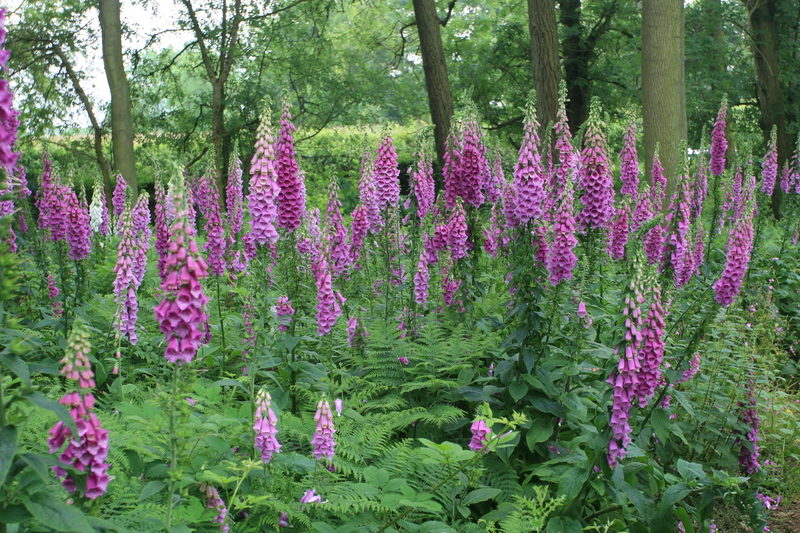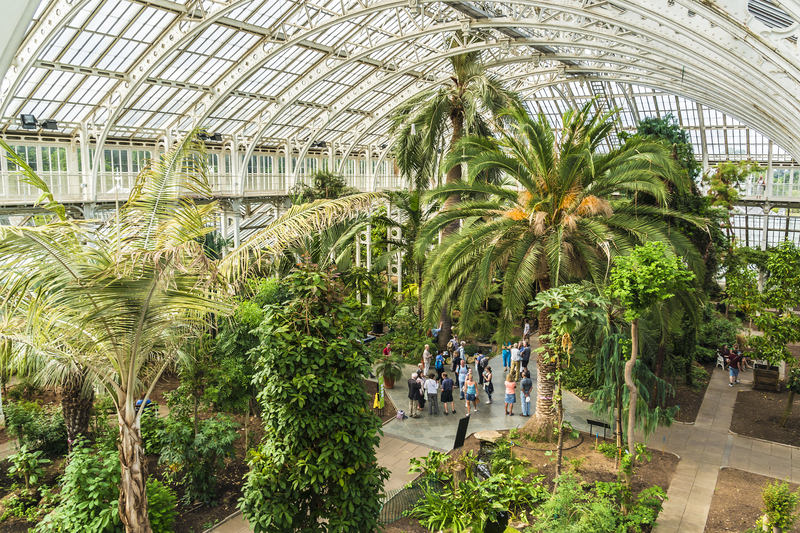Building a Harmony Between Dogs and Plants
Posted on 06/06/2025
Building a Harmony Between Dogs and Plants
Having both dogs and beautiful plants in your home is the dream of many pet and botanical enthusiasts. However, building a harmony between dogs and plants can sometimes feel like an impossible challenge. Dogs can dig, chew, or knock over your plants, and some plants can be toxic to your furry friends. But don't worry! With thoughtful planning, training, and plant selection, you can nurture a thriving environment where canines and houseplants peacefully coexist.
Why Pursue Harmony Between Dogs and Plants?
A well-balanced home with pets and indoor plants brings a range of benefits:
- Improved air quality thanks to plants absorbing toxins and releasing oxygen
- Stress reduction from the calming presence of greenery and beloved animals
- Enhanced decor--plants add texture, color, and life to every room
- Companionship and a natural touch--both dogs and plants can enrich our daily routines
But these rewards come with some responsibilities. To ensure that your dogs and plants live together in harmony, you must address both canine habits and plant safety.

Step 1: Choose Dog-Safe Plants
The foundation of creating a harmonious dog-and-plant home begins with responsible plant choices. Certain houseplants are toxic to dogs and should be avoided entirely.
Common Plants Toxic to Dogs
- Sago Palm (very toxic--even small amounts can be fatal to dogs!)
- Dieffenbachia (Dumb Cane)
- Pothos
- Philodendron
- Oleander
- English Ivy
- Aloe Vera (toxic to dogs, though useful for humans)
- Peace Lily
Tip: Always check with the ASPCA's full list of toxic and non-toxic plants for pets before bringing new greenery into your home.
Dog-Friendly Plant Alternatives
Here's a few popular pet-safe houseplants you'll love:
- Spider Plant--tough, attractive, and harmless
- Bamboo Palm--adds tropical vibes; safe for pups
- Areca Palm
- Boston Fern
- Haworthia--resembles Aloe, but is non-toxic
- Calathea species
- Prayer Plant
- Parlor Palm
Step 2: Dog-Proof Your Plants
Plant safety doesn't end with selection! Unfortunately, even non-toxic plants can cause tummy upsets if munched on. To preserve harmony between your dog and your indoor garden, you'll want to protect both.
1. Strategic Placement of Your Greenery
- Use shelves, tables, and plant stands to keep plants out of reach
- Hanging planters are stylish and totally pet-proof
- Avoid placing pots near your dog's beds or favorite lounging spots
- Consider window ledges or wall-mounted planters for extra "distance"
2. Choose Sturdy Pots and Planters
Heavy ceramic or concrete pots are less likely to tip over and cause a mess--or injure your dog.
- Look for wide-bottomed planters for extra stability
- Avoid glass or plastic planters in active pet zones
3. Cover Exposed Soil
Many dogs (especially puppies) are tempted by earthy smells. To curb digging or chewing:
- Add a layer of decorative stones, pine cones, or non-toxic mulch to the soil's surface
- Use moss or coconut coir to deter curious pups
- _Never_ use cocoa mulch, which is toxic to dogs
4. Secure Your Garden--Indoors and Out
If your plants extend outdoors, consider dog-proof fencing or raised beds. Garden enclosures prevent dogs from digging or trampling delicate roots.
- Use decorative fencing to block sensitive plant beds
- Install motion-activated sprinklers for persistent diggers
- Consider puppy playpens for young or rambunctious dogs
Step 3: Training Dogs to Respect Plants
For true harmony between your dog and your houseplants, training is essential. Even the best plant placement can't replace a dog who knows the house rules!
1. Teach 'Leave It' and 'No'
Start with basic commands like "leave it" and "no" to interrupt unwanted behavior. Use treats, toys, and positive reinforcement when your dog avoids plants.
- Practice with fake plants or low-value items first
- Reward with praise and treats when your dog obeys
- Be consistent--redirect every time your pup approaches a plant
2. Provide Alternatives for Curious Dogs
- Give your dog plenty of chew toys and puzzle feeders
- Offer safe outdoor time, if possible, for sniffing and digging
- Rotate toys to keep your dog interested and away from plants
3. Supervise and Redirect
Supervise your dog, especially when bringing home new plants. If you catch your dog sniffing, licking, or chewing, calmly redirect him to a more appropriate activity. Over time, this helps reinforce good habits.
Step 4: Create Dog-Friendly Plant Zones
Achieving harmony between houseplants and dogs isn't just about separation--it's about creating zones that work for everyone.
1. Dog Zones vs. Plant Zones
- Dedicate certain rooms or corners as "dog zones" (with beds, toys, and bowls)
- Designate "plant zones" (using shelving, plant stands, or terrariums)
- Use baby gates or indoor fencing for open-plan spaces
2. Outdoor Solutions
If your pup loves the garden, build a dedicated dog run or lawn area. Surround delicate plants and vegetable beds with fences, chicken wire, or decorative borders.
- Choose hardy, dog-tolerant ground covers (clover, creeping thyme) for romping p aw s
- Train your dog to use specific paths or zones
Step 5: Recognize Dog-Plant Warning Signs
While promoting harmony, you must always monitor your pets and plants:
- Watch for chewed or broken plant leaves, droopy stems, or soil messes
- Check your dog for signs of digestive upset--vomiting, drooling, diarrhea, or lethargy
- If you suspect plant poisoning, contact your vet immediately. Take a sample of the plant to aid diagnosis
Cultivating a Harmonious Atmosphere
Benefits of Pets and Plants Living Together
- Emotional comfort: Both pets and greenery reduce anxiety and boost happiness
- Enhanced routine: Plant care and daily walks bring structure to your day
- Home appeal: A lush, pet-filled home is warm, inviting, and full of life
- Connection to nature: Dogs and plants help us slow down and appreciate life's simple joys
Innovative Ideas for Joint Bliss
- Create a "dog window" (low windows or pet perches) surrounded by safe plants like ferns
- Incorporate living walls with pet-safe plants in dog-free rooms
- Try large, statement plants (like Fiddle Leaf Fig--note, only in dog-restricted areas as it's toxic!) in tall planters away from playful tails
- Use plant terrariums or closed glass cases (mini indoor greenhouses) to showcase rare or finicky species
- Design an outdoor "sensory garden" for dogs with edible grasses, herbs, and dog-safe flowers

Frequently Asked Questions: Dogs and Plants Living Together
Can my dog get sick from eating indoor or outdoor plants?
Yes! Many houseplants and garden species can upset your dog's stomach or even be life-threatening. Always research before bringing new plants into your home. When in doubt, consult your veterinarian.
How can I stop my puppy from digging in potted plants?
Use training ("leave it" command), block access with barriers, and cover soil with rocks or mulch. Redirect your puppy's energy with chews and toys.
Are there any "dog-proof" plants?
While no plant is truly "dog-proof," hardy tropicals (like the spider plant, cast iron plant, or parlor palm) are resilient and non-toxic. Keep all plants out of easy reach and train your pets for best results.
Should I get rid of my plants if I bring home a dog?
No need! With thoughtful arrangements, pet-safe plant choices, and training, dogs and plants can thrive together. Just be proactive in managing both pet and plant safety.
Conclusion: Building Lasting Peace Between Dogs and Plants
Bringing together two sources of happiness--dogs and indoor greenery--isn't just possible, it's rewarding! By choosing pet-safe plants, dog-proofing your displays, consistent training, and mindful arrangements, you'll discover that the harmony between dogs and plants is within reach. Your home will flourish, your furry companion will be safe and content, and you'll enjoy the beauty and companionship that both plants and dogs can bring.
Start making your home a haven for canines and houseplants today. With a little patience and planning, you're sure to enjoy the natural, joyful environment you dream of!

